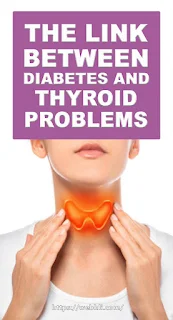IS THERE A CANCER VACCINE?
By Daily News Health Reporter
Cancer vaccines exist both to prevent different types of cancer and to treat them. Developing a cancer vaccine is a difficult process, but there are many trials in progress that could provide a vaccine for more types of cancer in the future.
Vaccines are medicines that train the body’s immune system to fight disease.
There are two types of cancer vaccine. One targets the viruses that can cause cancer. This will only work if a person receives them before they have exposure to the virus.
Doctors can also use some vaccines to treat some types of cancer. These tend to help stop the cancer from coming back or from spreading.
This article will explain what a vaccine is and which vaccines doctors use to prevent or treat cancer. It will also look at which cancer vaccines we might expect to see in the future.
Vaccines to prevent cancer
dragana991
Some viruses can cause certain types of cancer. Vaccines to prevent cancer work by helping the body fight the virus.
Immune cells are part of the body’s defense against harmful molecules, such as viruses. Each immune cell has proteins, called immune receptors, on its surface. Viruses also have proteins on their surface. These are called antigens.
Receptors and antigens are unique to each immune cell and each virus. They fit together like a lock and key. When an immune cell finds the antigen that “fits” in its lock, it binds to it and destroys the virus.
Sometimes, the body might not have immune cells with the right receptors to fight the virus. Vaccines to prevent cancer work by training the immune cells to recognize the virus.
The Food and Drug Administration (FDA) have approved two vaccines to prevent cancer: the human papillomavirus (HPV) vaccine and the hepatitis B vaccine.
Let us talk about HPV Vaccine:
HPV vaccine
According to our research the American Cancer Society Trusted Source shows that HPV is very common.
Many cases affect people in their late teens or early 20s.
How can a person catch HPV?
A person can catch HPV if they come into contact with someone who already has the virus. This might be during Trusted Source:
anal sex
vaginal sex
oral sex
Since HPV can cause no symptoms, a person may not realize that they have it.
What can HPV cause?
According to the Centers for Disease Control and Prevention (CDC)Trusted Source, the virus usually goes away by itself and does not cause any further health conditions.
For some people, however, HPV can cause:
cervical cancer
vulvar cancer
vaginal cancer
penile cancer
throat cancer
oropharyngeal cancer, which affects the mouth and throat (specifically the tongue and tonsils)
Some experts do not know why some people with HPV will go on to develop cancer while others will not.
Who should have the HPV vaccine?
The CDC Trusted Source recommends that all children receive the HPV vaccine as early as possible, ideally around the ages of 11–12 years.
The American Cancer Society Trusted Source do not recommend the HPV vaccine for anyone over the age of 26 years.
How do doctors give the vaccine?
The vaccine usually requires two doses, with the second dose arriving 6–12 months after the first.
Children who receive the first dose after the age of 15 years will need three doses over the course of 6 months.
What of Hepatitis B:
Hepatitis B vaccine
The hepatitis B virus (HBV) attacks the liver. In some people, it only lasts for a few weeks Trusted Source. Doctors call this acute HBV infection.
In other people, HBV is a long-term illness that doctors call chronic HBV infection.
What can hepatitis B cause?
Hepatitis B can lead to cirrhosis, or scarring of the liver, and liver cancer.
How can a person catch hepatitis B?
Hepatitis B spreads through bodily fluids, such as blood and semen. It can also pass to a fetus during pregnancy. People may also catch it through:
sharing razors or toothbrushes
having sex
sharing needles or syringes for drug use
Who should have the hepatitis B vaccine?
The CDC Trusted Source recommend that doctors give infants their first dose at birth.
Anyone under the age of 19 years who has not received the vaccine should ask their doctor for it.
Unvaccinated people in the following at-risk groups should also request a vaccine:
(a) people whose sexual partners have HBV
(b)sexually active people who are not in a monogamous relationship
(c)people who are undergoing testing or treatment for a sexually transmitted infection
(d) Males who have sexual contact with males
(e) people who share equipment for injecting drugs
(f) healthcare and public safety workers who may come into contact with other people’s blood or bodily fluids
people in corrections facilities
survivors of sexual assault
people who are traveling to areas with high rates of HBV
people who are living with the following conditions:
chronic liver disease
HIV
diabetes
How do doctors give the hepatitis B vaccine?
The vaccine can come in the form of two, three, or four stages of injections.
In most cases, people who have received the HBV vaccine will be immune to the virus for life.
Vaccines to treat cancer
Like viruses, cancer cells also have antigens on their surface. However, immune cells do not usually have the right receptors to bind to them.
Vaccines to treat cancer tend to work by helping the immune system find, bind to, and destroy cancer cells.
Vaccines for cancer treatment can:
prevent cancer from returning
kill cancer cells that have remained in the body following treatment
prevent a tumor from growing or spreading
Doctors can use vaccines alongside other cancer treatments, such as chemotherapy.
Current cancer-treating vaccines
So far, the FDA have only approved the following vaccines Trusted Source to treat cancer in the U.S.:
BCG live: This vaccine can treat early-stage bladder cancer.
Sipuleucel-T: This vaccine can treat prostate cancer.
Talimogene laherparepvec Trusted Source: This vaccine can treat melanoma.
Vaccines to treat cancer must cater to an individual’s needs. Scientists build each medicine to target the antigens on that person’s particular cancer cells.
(End of Part 1)

.jfif)













